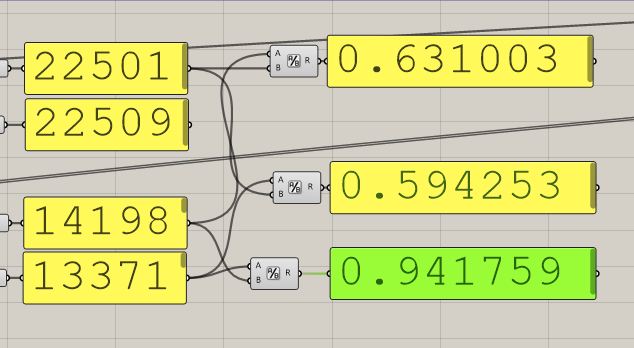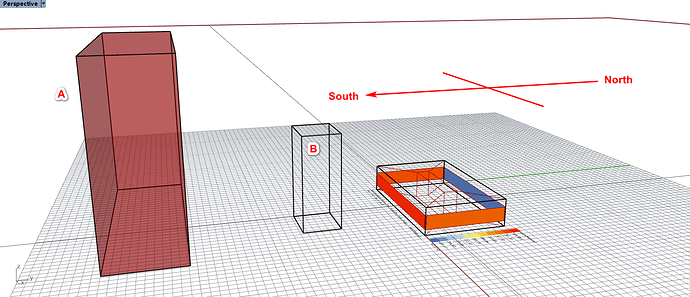I am working on a research concerning solar radiation and building energy consumption. I found that the E+ can output the total solar energy of one window(beam and diffuse energy). I compared it with the value calculated with radiance, it may be about about 60% of the radiance value. This bias may due to the solar heat gain coefficient (SHGC). But the question raises as I check the results of two different shading settings:
I can build two kind of shading objects that can let the south window achieve the same solar radiation value like this:
But I notice the total solar energy of the window is different, from this scene, the value of object B is 94% of that of object A. (For other scenes the bias maybe very high )

learn from these links:;
https://discourse.ladybug.tools/t/long-and-short-wave-radiation/737
https://discourse.ladybug.tools/t/solar-radiation-reflection-and-emission-on-exterior-wall/7951
Can I say this difference is because that although Radiance calculated the long wave of solar radiation, it can not calculate that of surrounding surfaces?
I’ve found this article:http://www.ibpsa.org/proceedings/BS2017/BS2017_260.pdf @chris @TheodorosGalanos. If the guess is right, can I use this equation: 
to make the result closer to the E+ result? I wonder can I do some post-processing to the radiance result to resemble the whole annual solar energy of the E+. This is a part of my research.
Any suggestion is appreciated. Thank you!
